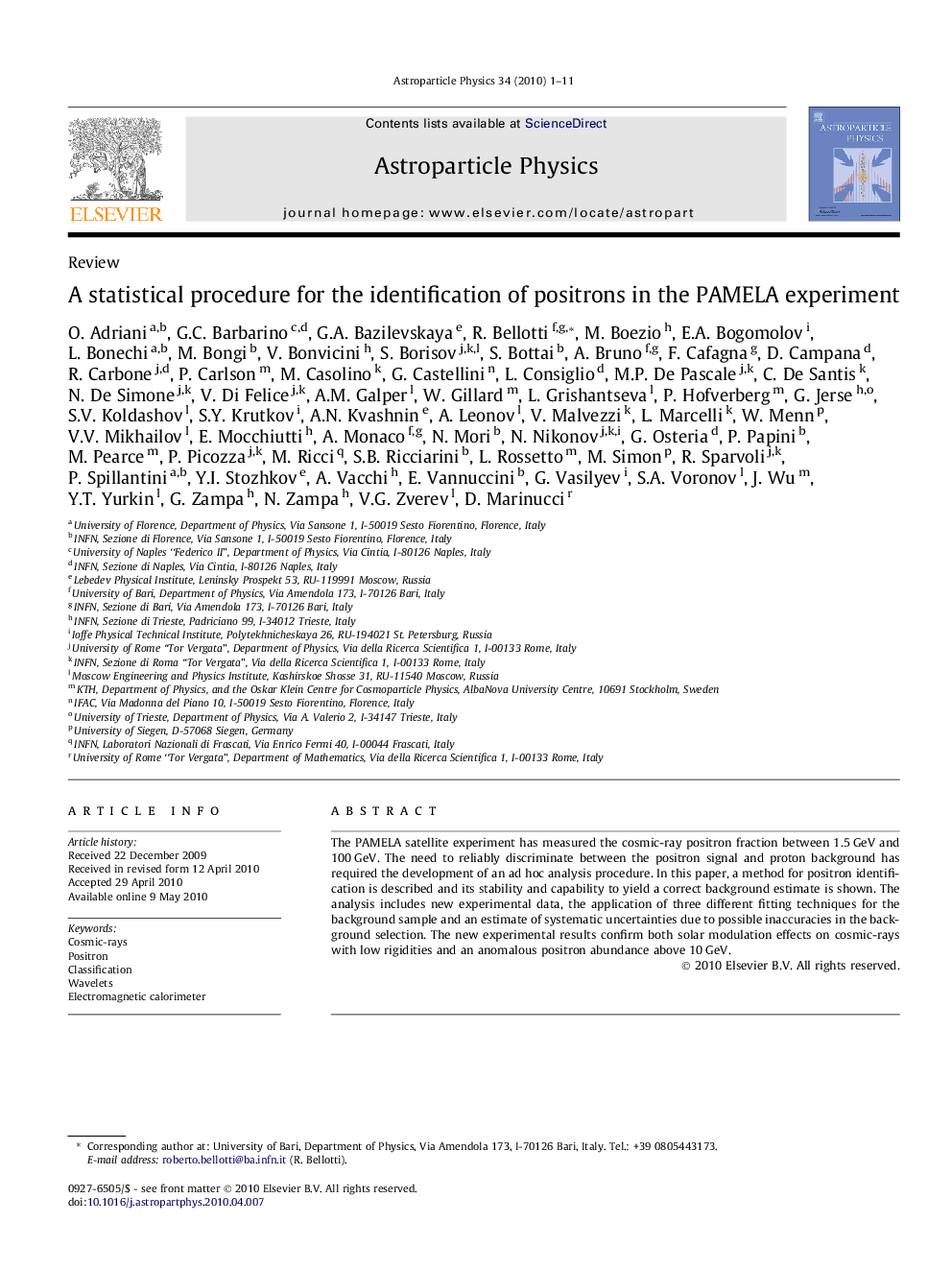| Article ID | Journal | Published Year | Pages | File Type |
|---|---|---|---|---|
| 1771159 | Astroparticle Physics | 2010 | 11 Pages |
The PAMELA satellite experiment has measured the cosmic-ray positron fraction between 1.5 GeV and 100 GeV. The need to reliably discriminate between the positron signal and proton background has required the development of an ad hoc analysis procedure. In this paper, a method for positron identification is described and its stability and capability to yield a correct background estimate is shown. The analysis includes new experimental data, the application of three different fitting techniques for the background sample and an estimate of systematic uncertainties due to possible inaccuracies in the background selection. The new experimental results confirm both solar modulation effects on cosmic-rays with low rigidities and an anomalous positron abundance above 10 GeV.
